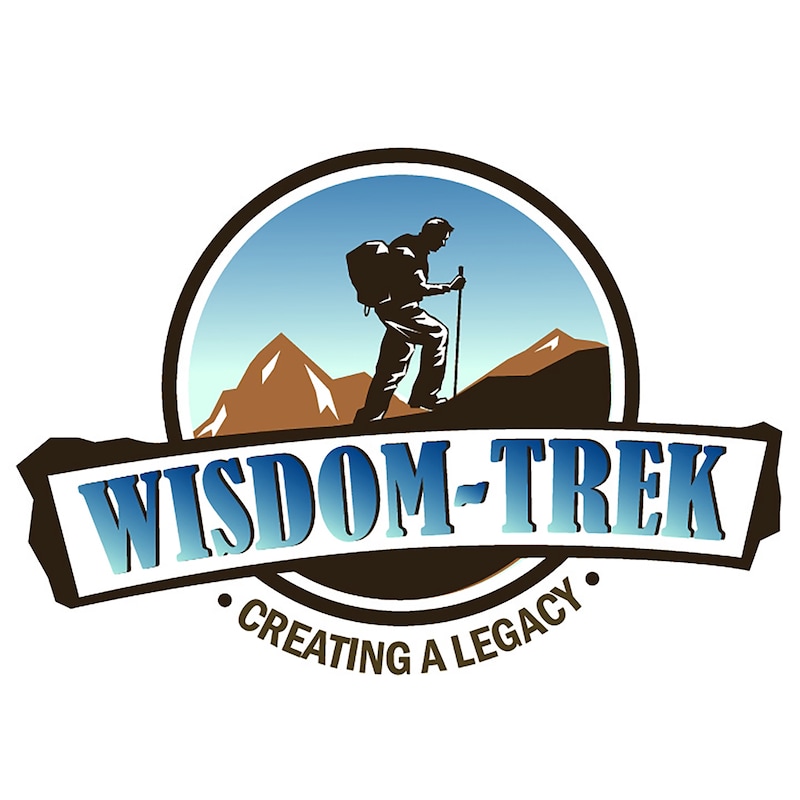
Shownotes
Wisdom-Trek / Creating a Legacy
Welcome to Day 866 of our Wisdom-Trek, and thank you for joining me.
I am Guthrie Chamberlain, Your Guide to Wisdom
There’s a Devil in the Details – Wisdom Wednesday
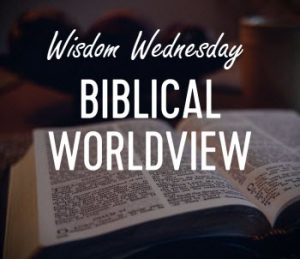
Thank you for joining us for our five days per week wisdom and legacy building podcast. Today is Day 866 of our trek, and it is Wisdom Wednesday. The past several months on Wednesday we have been focusing on interpreting current events through a Biblical worldview.
To establish a Biblical worldview, it is important that you also have a proper understanding of God’s Word. Especially in our western cultures, we do not fully understand the scriptures from the mindset and culture of the authors. In order to help us all have a better understanding of God’s word, we are investing the next several months on Wednesday reviewing a series of essays from one of today’s most prominent Hebrew Scholars Dr. Micheal S. Heiser which he has compiled into a book titled I Dare You Not to Bore Me with the Bible.
We are broadcasting from our studio at The Big House in Marietta, Ohio. There is an old idiom which says, “The devil is in the details,” which means “The details of a plan, while seeming insignificant, may contain hidden problems that threaten its overall feasibility.” In today’s essay, we want to look at an Old Testament Jewish Holy Day where literally…
There’s a Devil in the Details
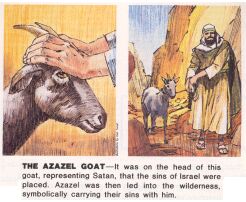
Yom Kippur, which is the Day of Atonement described in Leviticus 16, is a central element of the Jewish faith, even though it is not practiced today as it was in ancient times. Although many Christians have heard of the day, most would be startled to learn that a sinister figure lurks in the shadows of Leviticus 16.
The Day of Atonement ritual required a ram, a bull, and two goats. The ram was for a burnt offering intended to please God. The bull was taken “from the herd and served as a sin offering for Aaron, the high priest, and his family.” In this case, the sin offering restored the priest to ritual purity, allowing him to occupy sacred space and be near God’s presence, which we reviewed last week.
Curiously though, two goats taken “from the congregation” were needed for the single sin offering for the people. Listen as I read Leviticus 16:3-5, “When Aaron enters the sanctuary area, he must follow these instructions fully. He must bring a young bull for a sin offering and a ram for a burnt offering. He must put on his linen tunic and the linen undergarments worn next to his body. He must tie the linen sash around his waist and put the linen turban on his head. These are sacred garments, so he must bathe himself in water before he puts them on. Aaron must take from the community of Israel two male goats for a sin offering and a ram for a burnt offering.” Elsewhere the sin offering involved only one animal (e.g., Lev 4:1-12). So why two goats?
The high priest would cast lots over the two goats, with one chosen as a sacrifice “for the Lord.” The blood of that goat would purify the people. The second goat was not sacrificed or designated “for the Lord.” On the contrary, this goat, the one that symbolically carried the sins away from the camp of Israel into the wilderness, was “for Azazel.”
Leviticus 16:8-10 reads, “He is to cast sacred lots to determine which goat will be reserved as an offering to the Lord and which will carry the sins of the people to the wilderness of Azazel. Aaron will then present as a sin offering the goat chosen by lot for the Lord. The other goat, the scapegoat chosen by lot to be sent away, will be kept alive, standing before the Lord. When it is sent away to Azazel in the wilderness, the people will be purified and made right with the Lord.”
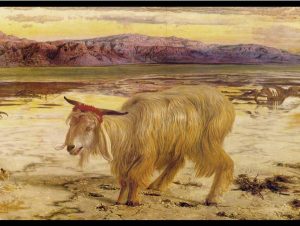
The Hebrew term Azazel occurs four times in Leviticus 16 but nowhere else in the Bible. Many translations prefer to translate the term as a phrase, “the goat that goes away,” which is the same idea conveyed in this passage as “the scapegoat.”
This passage also translates the word as a name Azazel. The “scapegoat” option is possible, but since the phrase “to Azazel” parallels the phrase “for Yahweh,” which is translated “for the Lord.” The Hebrew language suggests that two divine figures are being contrasted by the two goats.
A strong case can be made for translating the term as the name Azazel. Ancient Jewish texts show that Azazel was understood as a demonic figure associated with the wilderness. The Mishnah, which is the first major written collection of the Jewish oral traditions known as the “Oral Torah.” It is also the first major work of Rabbinic literature, and it records that the goat for Azazel was led to a cliff and pushed over, ensuring it would die and not return.
This association of the wilderness with evil is also evident in the New Testament, as this was where Jesus met the devil. Matthew 4:1 tells us, “Then Jesus was led by the Spirit into the wilderness to be tempted there by the devil.” Also, in Leviticus 17:1-7, we learn that some Israelites had been accustomed to sacrificing offerings to “goat demons.” The Day of Atonement replaced this illegitimate practice.
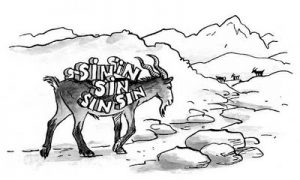
The second goat was not sent into the wilderness as a sacrifice to a foreign god or demon. The act of sending the live goat out into the wilderness, which symbolically was unholy ground, was to send the sins of the people where they belonged to the demonic domain. With one goat sacrificed to bring purification and access to God and one goat sent to carry the people’s sins to the demonic domain, this annual ritual reinforced the identity of the true God and His mercy and holiness.
As we end today, here is a wisdom nugget, “When Jesus dies on the cross for all of humanity’s sins, He is crucified outside the city, paralleling the sins of the people being cast to the wilderness via the goat to Azazel. Jesus dies once for all sinners, negating the need for this ritual.”
Next Wisdom Wednesday we will continue with Moses as we look at Dr. Heiser’s next essay titled Love Potion: Numbers 5. I believe you will find this another interesting topic to consider as we build our Biblical worldview.
Tomorrow we will continue with our 3-minute wisdom nugget that will provide you with a bit of cheer that will help you to lighten up and live a rich and satisfying life. So encourage your friends and family to join us and then come along with us tomorrow for another day of our Wisdom-Trek, Creating a Legacy.
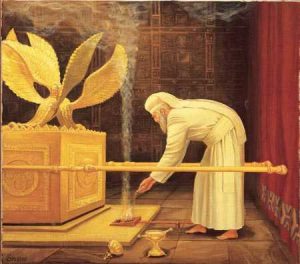
If you would like to listen to any of our past 865 treks or read the Wisdom Journal, they are available at Wisdom-Trek.com. I encourage you to subscribe to Apple Podcast or Google Play so that each day’s trek will be downloaded automatically.
Thank you so much for allowing me to be your guide, mentor, and most of all your friend as I serve you through the Wisdom-Trek podcast and journal.
As we take this trek together, let us always:
- Live Abundantly (Fully)
- Love Unconditionally
- Listen Intentionally
- Learn Continuously
- Lend to others Generously
- Lead with Integrity
- Leave a Living Legacy Each Day
I am Guthrie Chamberlain reminding you to Keep Moving Forward, Enjoy Your Journey, and Create a Great Day Everyday! See you tomorrow!